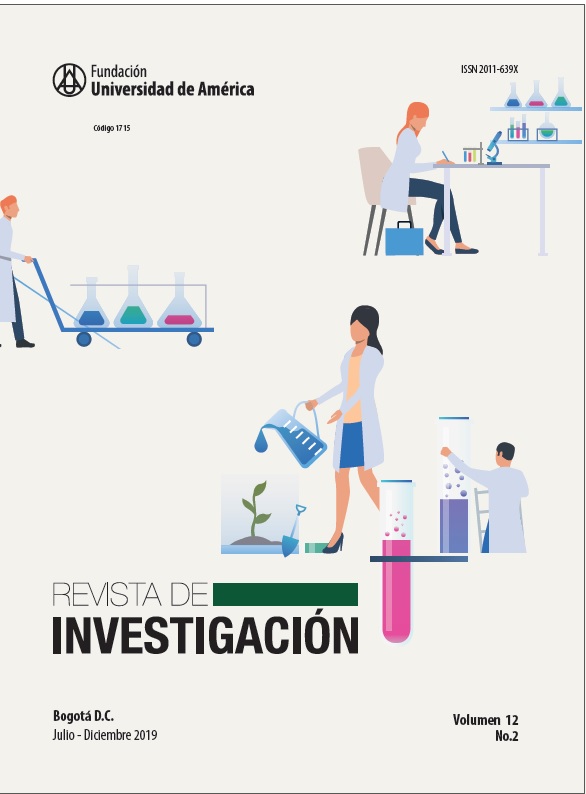Llenado de un recipiente: Modelación y simulación desde conceptos básicos afines a la Ingeniería
Resumen
Se caracteriza el comportamiento de llenado de un recipiente con dos fluidos: miel y lubricante. Inicialmente, se describen de forma cualitativa las variables y se procede a la experimentación registrando las mediciones. Posteriormente se realiza el análisis de datos, caracterizando de las variables para definir las relaciones entre estas, y se procede a la construcción de un modelo ajustado a los resultados obtenidos. Desde la experimentación, y según el modelo asociado a esta, se construye la simulación del evento a través de Geogebra, y se repite el proceso con cada una de las transformaciones del evento, permitiendo su análisis y comparación. Los resultados podrán ser usados como herramienta educativa idónea para la integración de áreas del conocimiento afines a la ingeniería.
Citas
Acofi (2007). El ingeniero colombiano del 2020: Retos para su formación. Bogotá: Acofi.
Carlson, M. P., Jacobs, S., Coe, E., Larsen, S., & Hsu, E. (2002). Applying covariational reasoning while modeling dynamic events: A framework and a study. Journal for Research in Mathematics Education, 33(5), 352-378. DOI: https://doi.org/10.2307/4149958
Clement, J. (1989). The concept of variation and misconceptions in Cartesian graphing. Focus on Learning Problems in Mathematics, 11(1-2), 77-87.
Confrey, J., & Smith, E. (1994). Exponential functions, rates of change, and the multiplicative unit. Educational Studies in Mathematics, 26, 135-164. DOI: https://doi.org/10.1007/BF01273661
Jhonson, H. L. (2012). Reasoning about variation in the intensity of change in covarying quantities involved in rate of change. Journal of Mathematical Behavior, 31, 313-330. DOI: https://doi.org/10.1016/j.jmathb.2012.01.001
Johnson, H. L. (2013). Reasoning about quantities that change together. The Mathematics Teacher, 106(9), 704-708. DOI: https://doi.org/10.5951/mathteacher.106.9.0704
Johnson, H. L. (2015). Together yet separate: Students’ associating amounts of change in quantities involved in rate of change. Educational Studies in Mathematics, 89, 89-110. DOI: https://doi.org/10.1007/s10649-014-9590-y
Moore, K. C., & Thompson, P. W. (2015). Shape thinking and students’ graphing activity. En T. Fukawa-Connelly, N. Infante, K. Keene & M. Zandieh (Eds.), Proceedings of the eighteenth annual conference on research in undergraduate mathematics education (pp. 782-789). Pittsburgh: Mathematical Association of America.
Paoletti, T., & Moore, K. C. (2017). The parametric nature of two students’ covariational reasoning. Journal of Mathematical Behaviour, 48, 137-151. DOI: https://doi.org/10.1016/j.jmathb.2017.08.003
Saldanha, L., & Thompson, P. W. (1998). Re-thinking covariation from a quantitative perspective: Simultaneous continuous variation. En S. B. Berenson, K. R. Dawkins, M. Blanton, W. N. Coloumbe, J. Kolb, K. Norwood, & L. Stiff (eds.), Proceedings of the 20th annual meeting of the psychology of mathematics education North American chapter (pp. 298-303). Raleigh, NC: North Carolina State University.
Stalvey, H. & Vidakovic, D. (2015). Students’ reasoning about relationships between variables in a real-world problem. Journal of Mathematical Behaviour, 40, 192-210. DOI: https://doi.org/10.1016/j.jmathb.2015.08.002
Simon, M. A. (1996). Beyond inductive and deductive reasoning: The search for a sense of knowing. Educational Studies in Mathematics, 30(2), 197-209. DOI: https://doi.org/10.1007/BF00302630
Thompson P. W. (2011). Quantitative reasoning and mathematical modeling. En New perspectives and directions for collaborative research in mathematics education, (Vol. 1).












